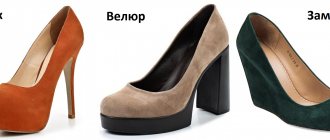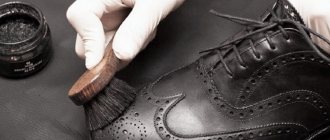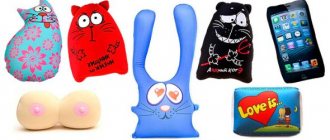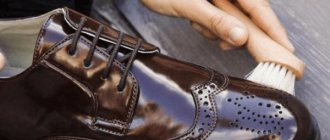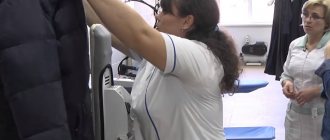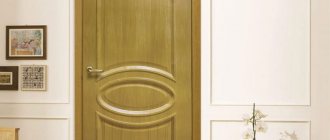Velor is a beautiful, but rather capricious material. It looks attractive due to its velvety surface. Its pile is longer than that of nubuck. Velor is more reminiscent of suede, but it is considered more expensive in comparison and is produced differently.
Various models are made from this material: sandals, moccasins, ankle boots and boots. But velor does not like moisture - rain, dew, wet snow. Consumers believe (quite rightly) that such shoes are elegant, but not practical. Velor is not suitable for daily wear, especially in rainy autumn or early spring. The temptation to walk in elegant shoes requires careful attention to their cleaning and restoration.
Natural velor for shoes
Velor for shoes, apart from the name, has nothing in common with fabric, which is used for sewing clothes. Here we are talking about tanned natural leather obtained from the half-leather of small-horned cattle.
What distinguishes the material from other natural fleecy leathers, such as suede or nubuck, is that the outer side of the leather is used as the inner side, and the back side as the front side. Therefore, it is easy to distinguish it by its thick pile on one side and absolute smoothness on the other.
To give good hairiness to the fabric during tanning and grinding, chromium or titanium salt is used. Silicone is used to enhance water-repellent properties. Despite this, caring for velor shoes requires regularity.
Detergents
It is better to wash stains from such a delicate material with liquid or gel products that do not contain aggressive bleaching components.
This product can be bought in a regular store, the main thing is that the label “for delicate fabrics” is visible on the packaging. The composition is capable of washing a velor robe, tracksuit, top and other items of clothing.
As an option, you can use the economical “Help” liquid, which is suitable for thermal treatment with water, either by hand or using an automatic machine. Labeled for wool and delicate fabrics.
The liquid does not contain chlorine and is ideal for fabrics with any length of pile. Cotico gel with the same markings as on the liquid has also proven itself well.
It differs from the previous product in its soapy consistency, which is why it is more popular among housewives. It is also ideal for colored fabrics because it preserves the color of items and prevents them from fading.
Velor detergents
Velor shoes
Velor shoes have a unique style and rich appearance. Unscrupulous manufacturers who pass off suede as velor have ruined the reputation of this leather. As a result, the masses got the impression that velor shoes are just a fake of suede ones. But in reality, it is a unique material with many advantages.
The positive properties of which include:
- noble appearance;
- uniform color of finish;
- invisibility of skin pores;
- good heat saving.
The disadvantages include, first of all, the difficult care of velor shoes. To maintain the aesthetic appearance, your beautiful pair must be regularly treated with water-repellent agents. This will help prevent your shoes from deforming prematurely.
Velor is great for warm sunny days. This explains that on store shelves there are many models of elegant velor shoes, sandals, sandals, and moccasins.
Velor can give things a status look and add sophistication to any look, so this is an excellent solution for festive and special occasions. Creating an image is also simplified by the fact that most manufacturers offer clutches, belts and other accessories of similar design to their shoes.
Alternative cleaning methods
Thanks to the introduction of advanced technologies, velor is now used for a variety of purposes. They sew jackets, tracksuits, dresses, tops, pants, and make shoes. Upholstery and covers for pieces of furniture look elegant and rich.
It is important to care for them properly. To dry clean a velor sofa at home, use a vacuum cleaner. Can be used regularly. The process uses a special nozzle. Particular attention is paid to joints and seams, where debris and dust accumulate most.
To return shiny fibers to their previous shape, you need to know how to properly clean velor. Places that need to be brought back to normal are held over hot steam for 4 minutes. Outerwear is also cleaned in the same way, except for items made of drape velor, which are difficult to clean at home. It is advisable to seek the services of specialist dry cleaners.
Small particles or pet hair often collect on the fabric, especially during shedding. How to clean lint from a velor dress? The result of using a special tape with a sticky base for cleaning things is effective. You can also walk over the surface with a wet palm.
How to restore velor? The crushed pile is lifted using a massage hair brush or a stiff clothes brush. Puffers are also used for small pets. They just need to be used carefully so as not to damage the material. The jacket is scratched against the pile, then moved in the opposite direction.
Artificial velor for shoes
A common misconception is that velor is a budget option for suede. This is a stereotype that is easy to break. It is enough to pay attention to the cost of shoes made of real leather - you cannot call them cheap. It is not uncommon for sellers to pass off an artificial substitute as natural velor in shoes.
To distinguish the first from the second and not fall for the trick of scammers, you need to know the following signs:
- The basis of natural velor is leather, while that of artificial velor is textile. To see it, you need to part the pile and look closely.
- A drop of water applied to a real leather item will simply roll down the surface. On an artificial one it will leave a wet spot.
- If you place your palm on the product for a few seconds and no sweat appears, then you have an original in your hands.
- Artificial velor for shoes leaves creases when bent, while natural velor forms rounded waves.
- Availability of sample. Manufacturers always hang a sample label on the original item. The presence of such a label indicates the natural origin of the material.
- High cost does not always guarantee naturalness. Low is a 100% sign of questionable quality.
Removing unpleasant odor
To eliminate odors, you can use special shoe deodorants or proven folk remedies.
A special spray will help get rid of the smell
To help remove the smell:
- soda;
- Activated carbon;
- vinegar;
- hydrogen peroxide;
- alcohol, vodka.
Dry products (soda, charcoal) should be poured inside the boots at night. Shake it well in the morning, you can vacuum it at low power.
Apply vinegar, peroxide, and alcohol compounds to a cotton pad, wipe the inner surface, and repeat if necessary.
The slight smell will be overcome by aroma sachets for clothes or coffee beans placed inside for 3-5 hours.
To avoid the appearance of an unpleasant, musty odor, periodically dry your shoes and let them rest for several days. Crumpled newspapers, paper napkins, and silica gel purchased at a hardware store will help absorb dampness - the source of the stench.
How to distinguish velor from suede
Velor is often confused with another fleecy leather material - suede. The materials have a number of differences, from the method of obtaining raw materials and processing to the quality characteristics of the final product.
Let's look at the differences:
- Velor is sanded only on one side, and suede on both. Therefore, for suede products, the inner and outer parts are almost identical. The suede pile is longer and does not leave fingerprints on it.
- The front part in velor is the back side of the raw material and therefore there are no noticeable pores on it. In suede they are clearly visible.
- When you run your hand over the canvas, the suede changes color. Velor has a uniform color.
- When sewing from suede material, the edges are never turned up. In velor products, on the contrary, this is due to the fact that the base is thinner.
- Velor has no smell. Suede smells like leather.
- Suede is more resistant to the adverse effects of the external environment. Velor products quickly become wet, dirty and dusty.
So velor or suede, which is better for shoes? When choosing, you should understand that both materials have both advantages and disadvantages. It is important to pay attention not only to the appearance of the product, but also to its characteristics.
Removing stains
kak-stirat-velyurovyie-veshhi-4
kak-stirat-velyurovyie-veshhi-5
To extend its service life, you can not completely wash the product, but only clean individual stains. To do this, use a weak solution of baby soap. The product is applied to contaminated areas. Use a soft brush to remove stains. Then rinse. Before washing a velor dress, you should also wash the contaminated areas.
Boots made of velor or suede, which is better?
Paying tribute to fashion, you want to look stylish and elegant at any time of the year. But you should approach the choice of a winter pair thoroughly and give preference to the one that, in addition to beauty, will not harm your health. Shoes should provide warmth and comfort to your feet. It was already noted above that velor is vulnerable to adverse weather conditions. In such shoes, your feet will quickly freeze and get wet. Velor is rarely used for the production of warm winter boots.
Suede boots
Velor boots
Choose winter boots made of natural suede. The properties and characteristics of this leather are perfect for changing weather conditions.
Velor boots can be an excellent demi-season solution. They will be appropriate for parties, visiting theaters and museums, or dining in a restaurant.
Helpful information:
Women's velor robe
ECCO shoe size chart
